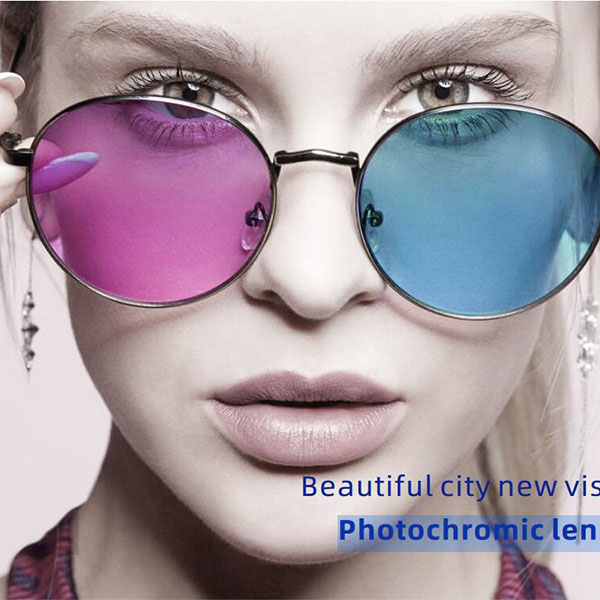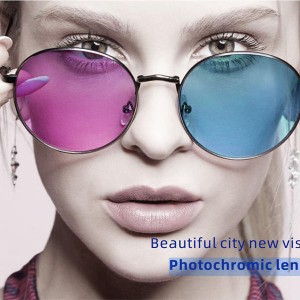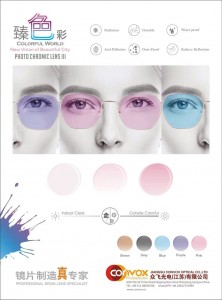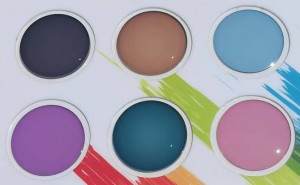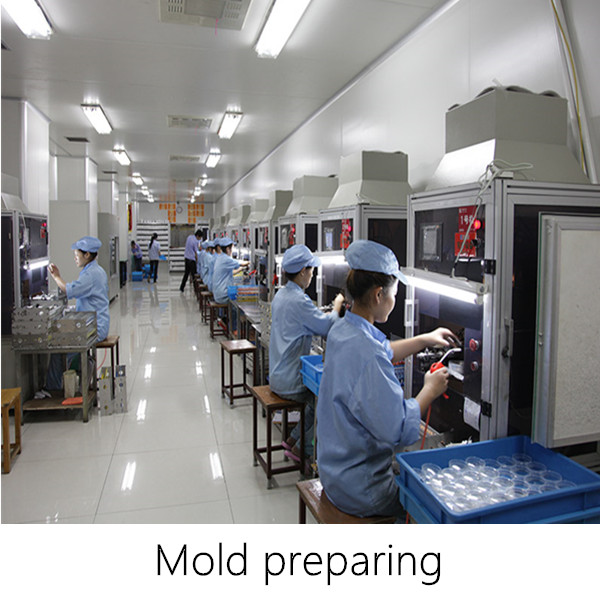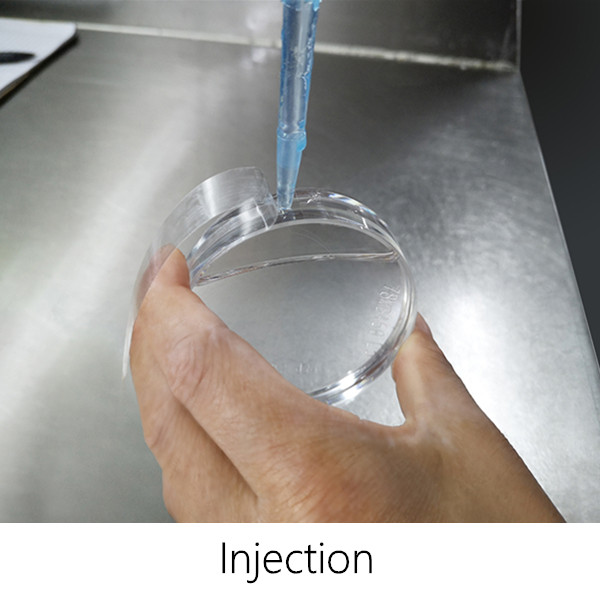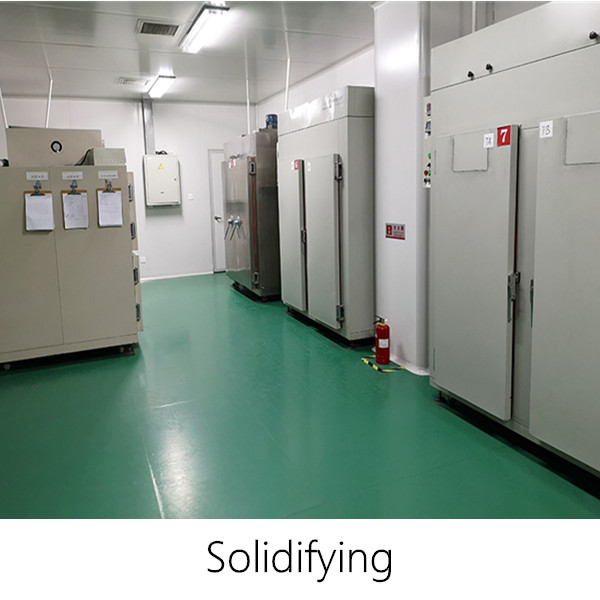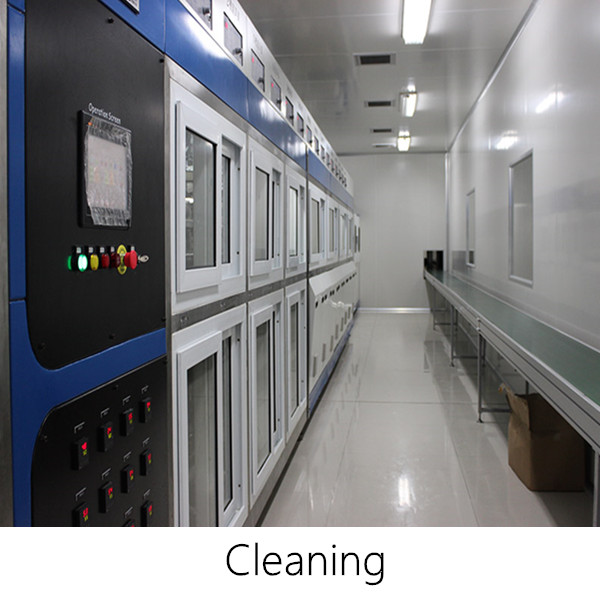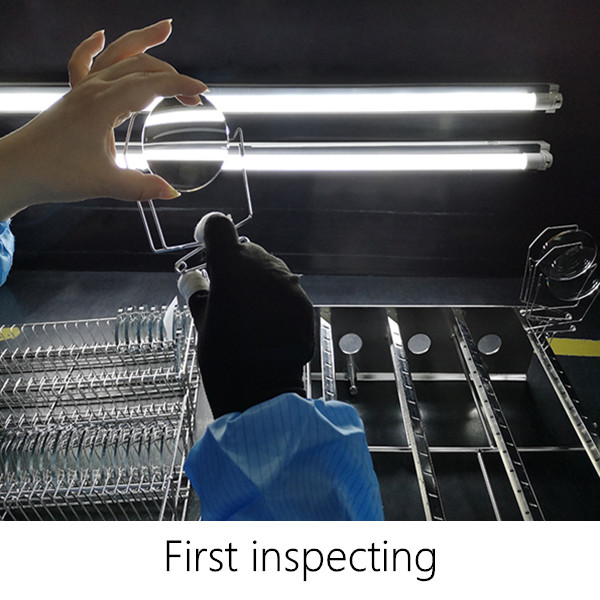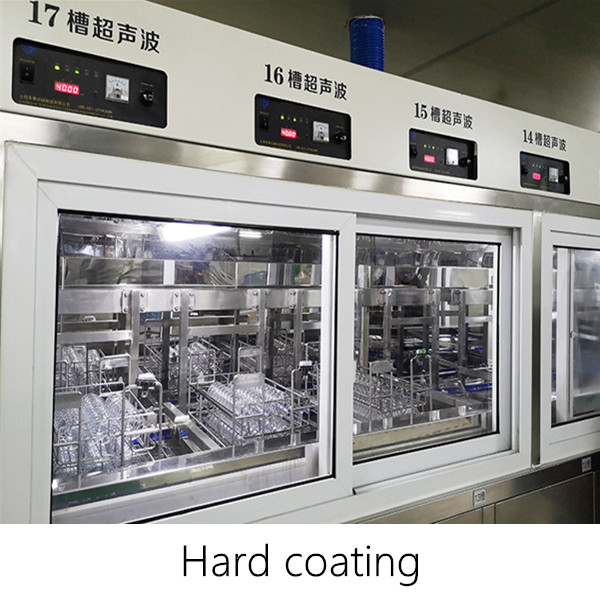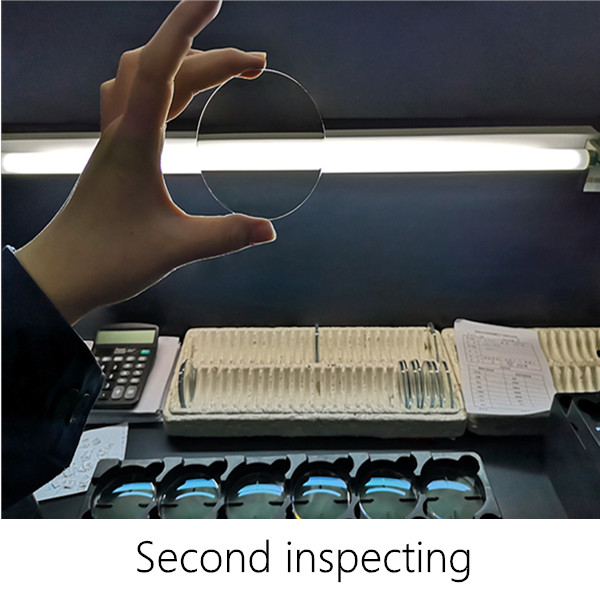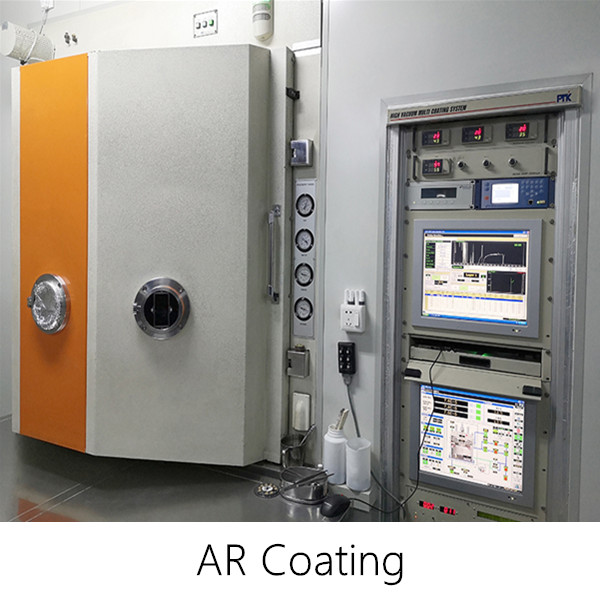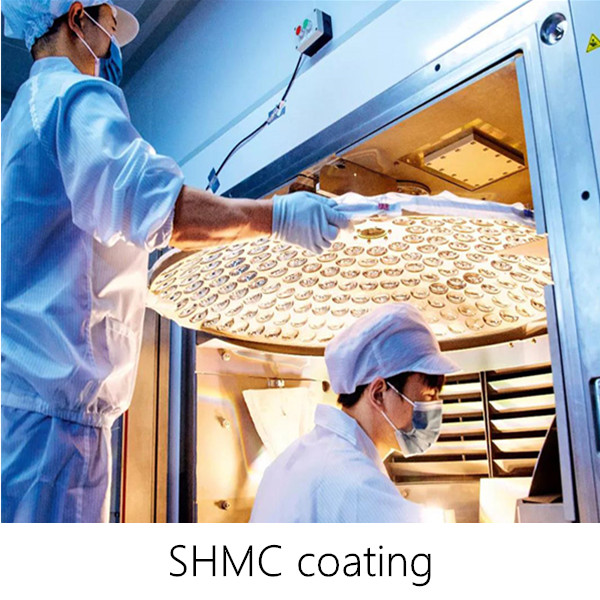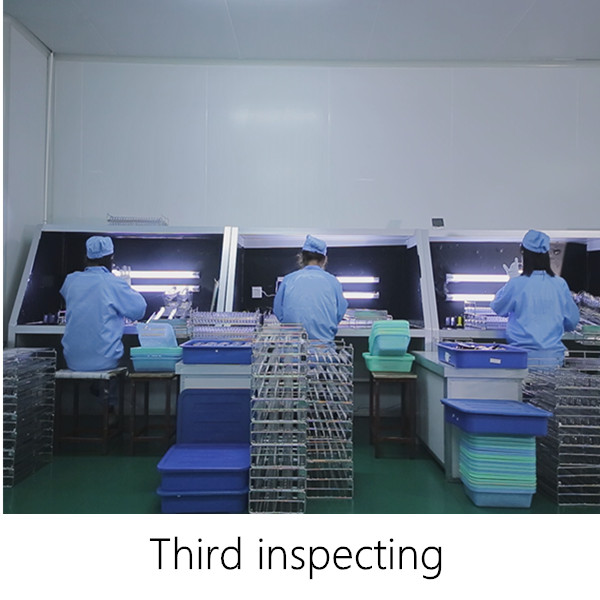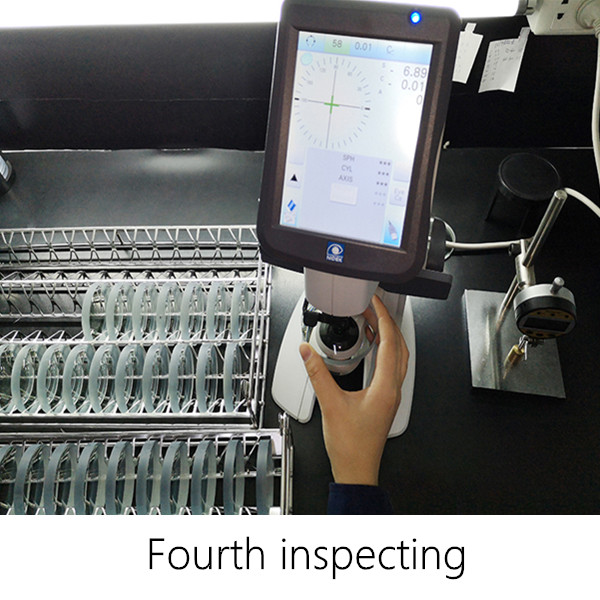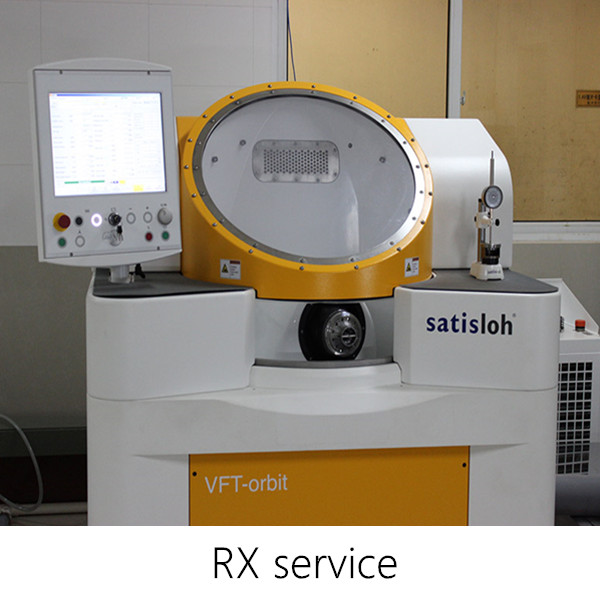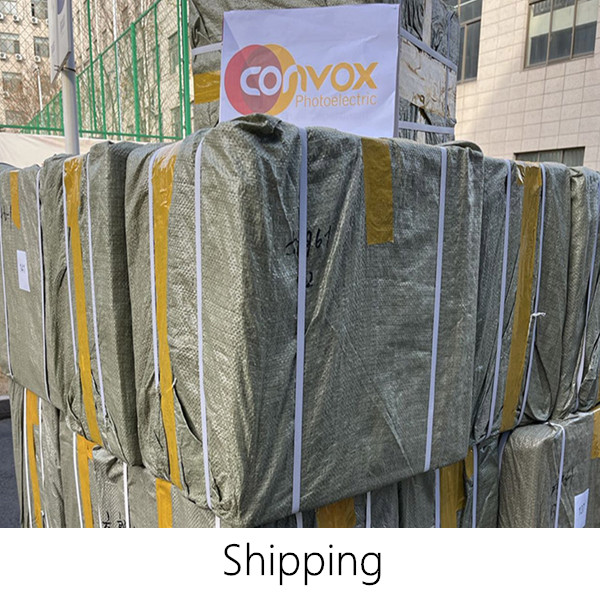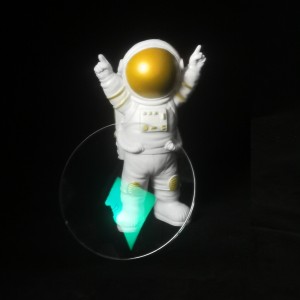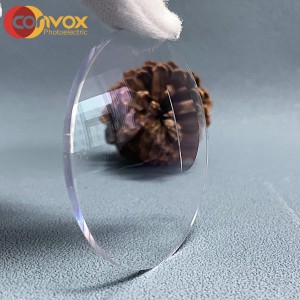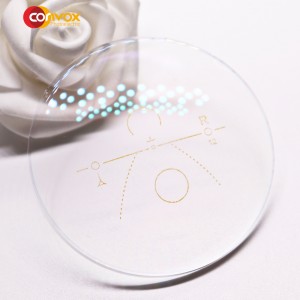G8 Beautiful city new vision Photochromic lens

Fast color change with 7 effects
● The color changes instantly under the sun, and the darkest is the same dark color as sunglasses
● Interior, and the color is automatically adjusted according to the change of light
● Aspherical design, with more health and comfort
● Anti-radiation TV and computer mirror effectively protect and correct eyesight
● Anti-UV400, comprehensive prevention of cataract
● Effectively block glare, improve contrast and help relieve eye fatigue
● The third-generation coating technology, super hard and scratch-resistant, longer ser vice life
Higher Abbe number, clearer vision
The Abbe number is a physical number invented by the German physicist Ernst Abbe, also known as the dispersion coefficient, which is used to measure the degree of light dispersion of the medium.
Because the same transparent medium has a difference in refractive index for light of different wavelengths, and white light is composed of light of different wavelengths, the special phenomenon of dispersion occurs when transparent materials refract white light. The Abbe number is an inverse proportional index used to express the dispersion ability of transparent materials. Therefore: the higher the Abbe number, the weaker the dispersion phenomenon and the clearer the vision.

Effectively resist UV rays
UV ultraviolet rays have a huge impact on the eyes! 160 million people worldwide are blinded by cataracts ever y year, and 20% of them are caused by long-term exposure to ultraviolet rays!
The color dyed on the lens can absorb the visible light irradiated by the sun. Since ultraviolet light is invisible light, it cannot absorb ultraviolet light. The anti-ultraviolet function of dyed lenses depends on the lens material, and has nothing to do with the color and shade of dyeing. Hongchen stained films use high-quality lens materials to effectively resist ultraviolet rays.
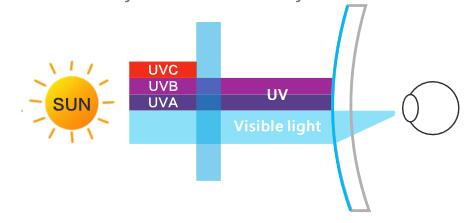
Quickly change color
one mirror and three uses, refuse cumbersome
Indoor night transparent color
Discoloration of outdoor ultraviolet radiation
Become deep, retreat fast, comprehensive eye protection
Color changing series lens
● The world's advanced film color change technology, the color change (fading) is more uniform, faster, and the color change performance is excellent
● The lens surface is easy to clean, resistant to dirt and wear
● Add anti-blue light function to effectively block blue light damage from mobile phones and computers, and protect your eyes 24 hours
● The discoloration of the film layer is more excellent
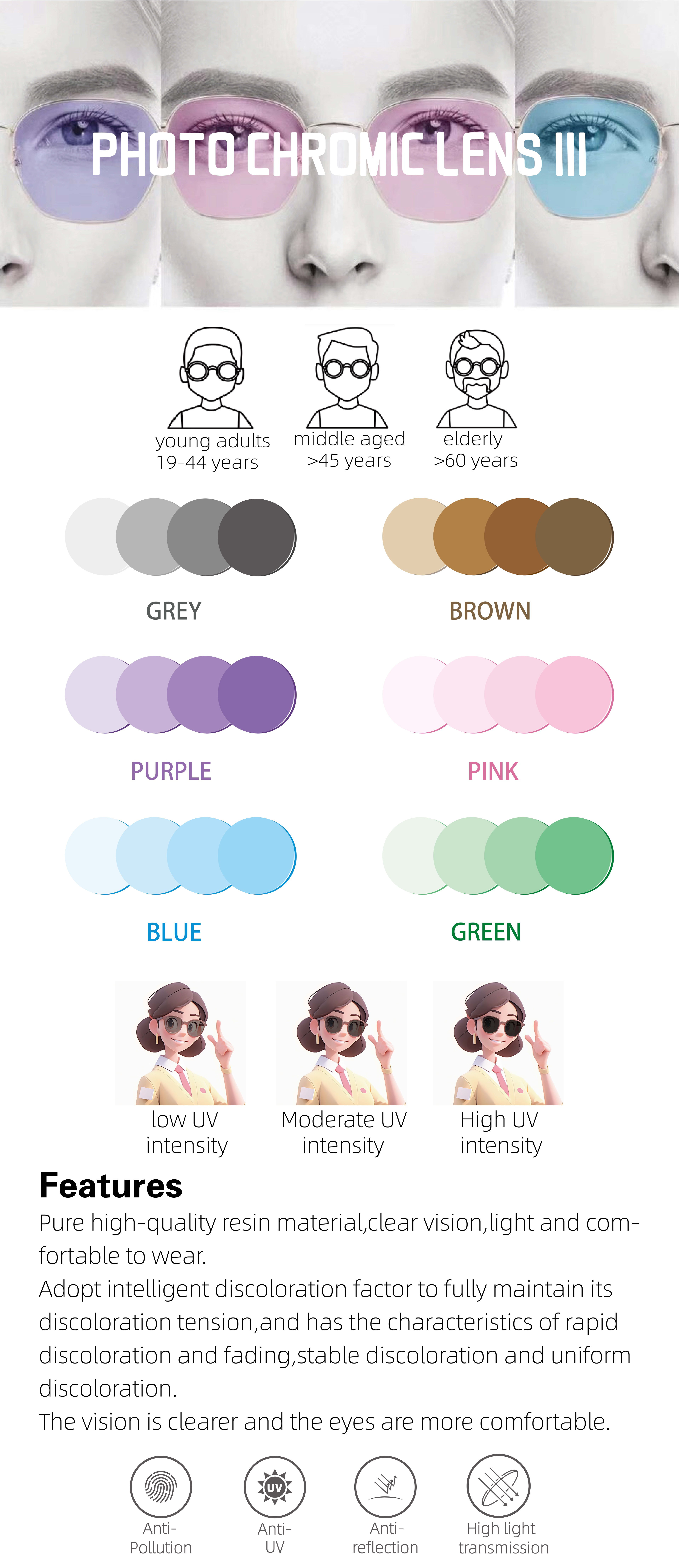
Product packaging
- Packaging Details
1.56 hmc lens packing:
envelops packing (For choice):
1)standard white envelops
2)OEM with customer's LOGO, have MOQ requirement
cartons: standard cartons:50CM*45CM*33CM(Every carton can include around 500 pairs lens,21KG/CARTON)
Port:SHANGHAI
Shipping & Package
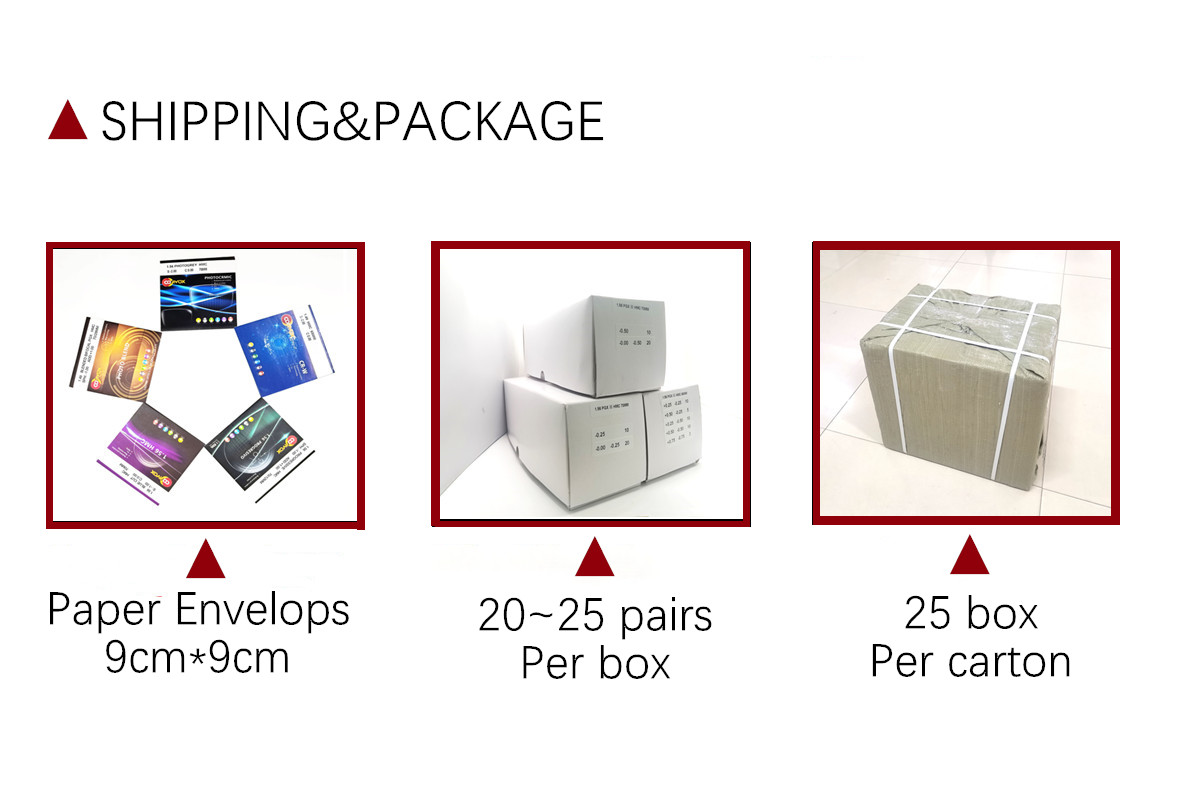
Production Flow Chart
About Us

Certificate

Exhibition
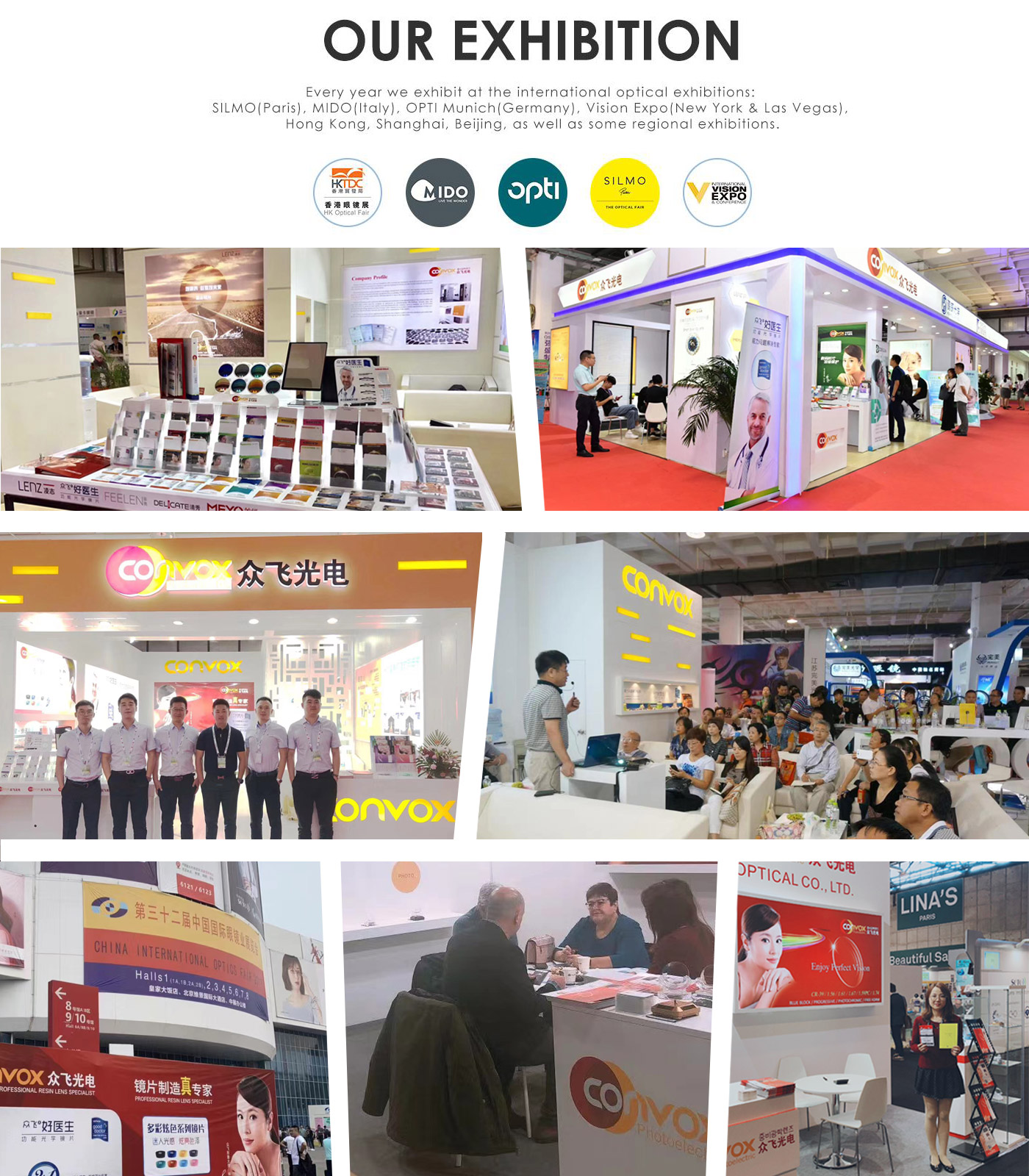
Our Products Testing

Quality Checking Procedure

FAQ


